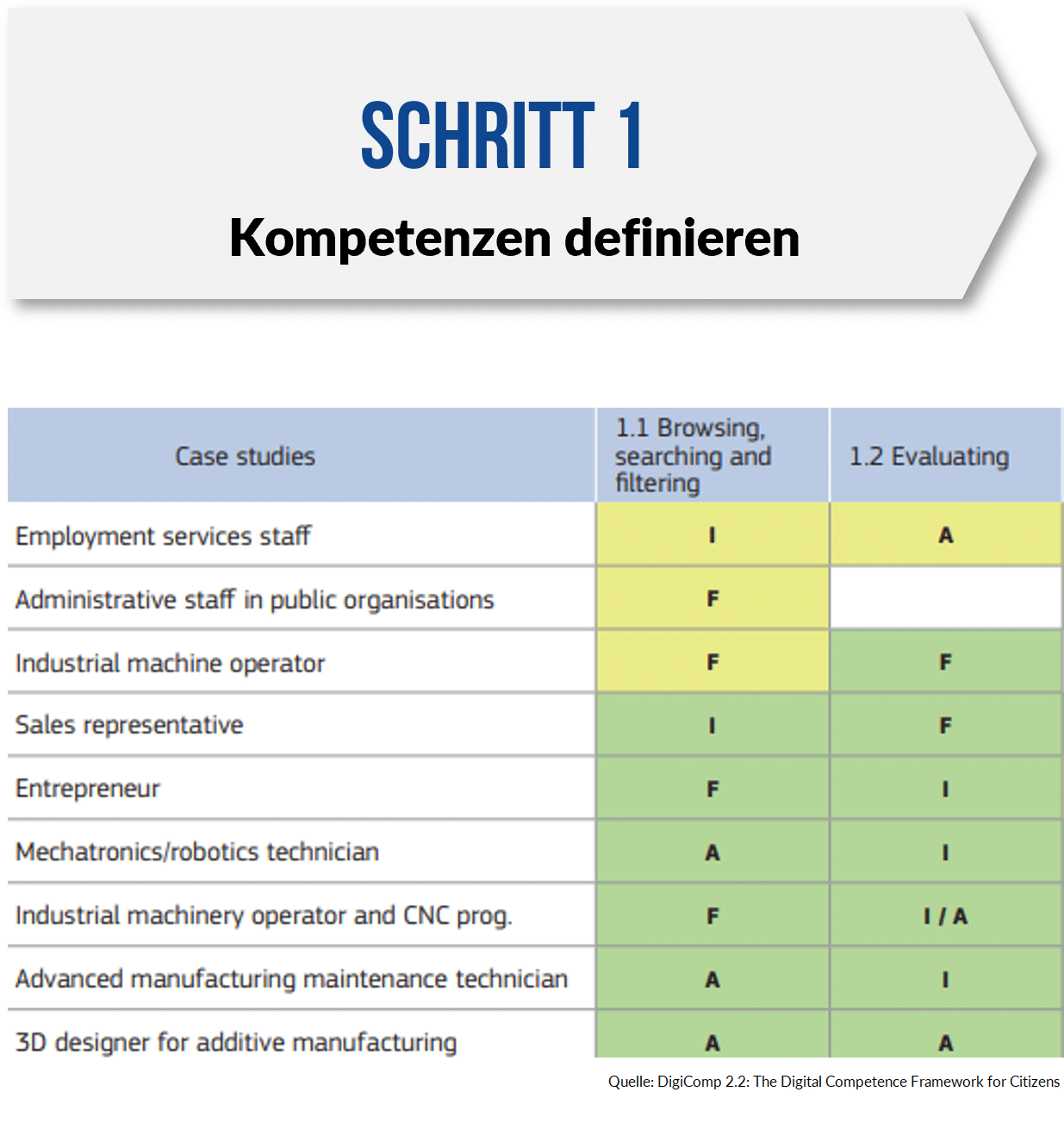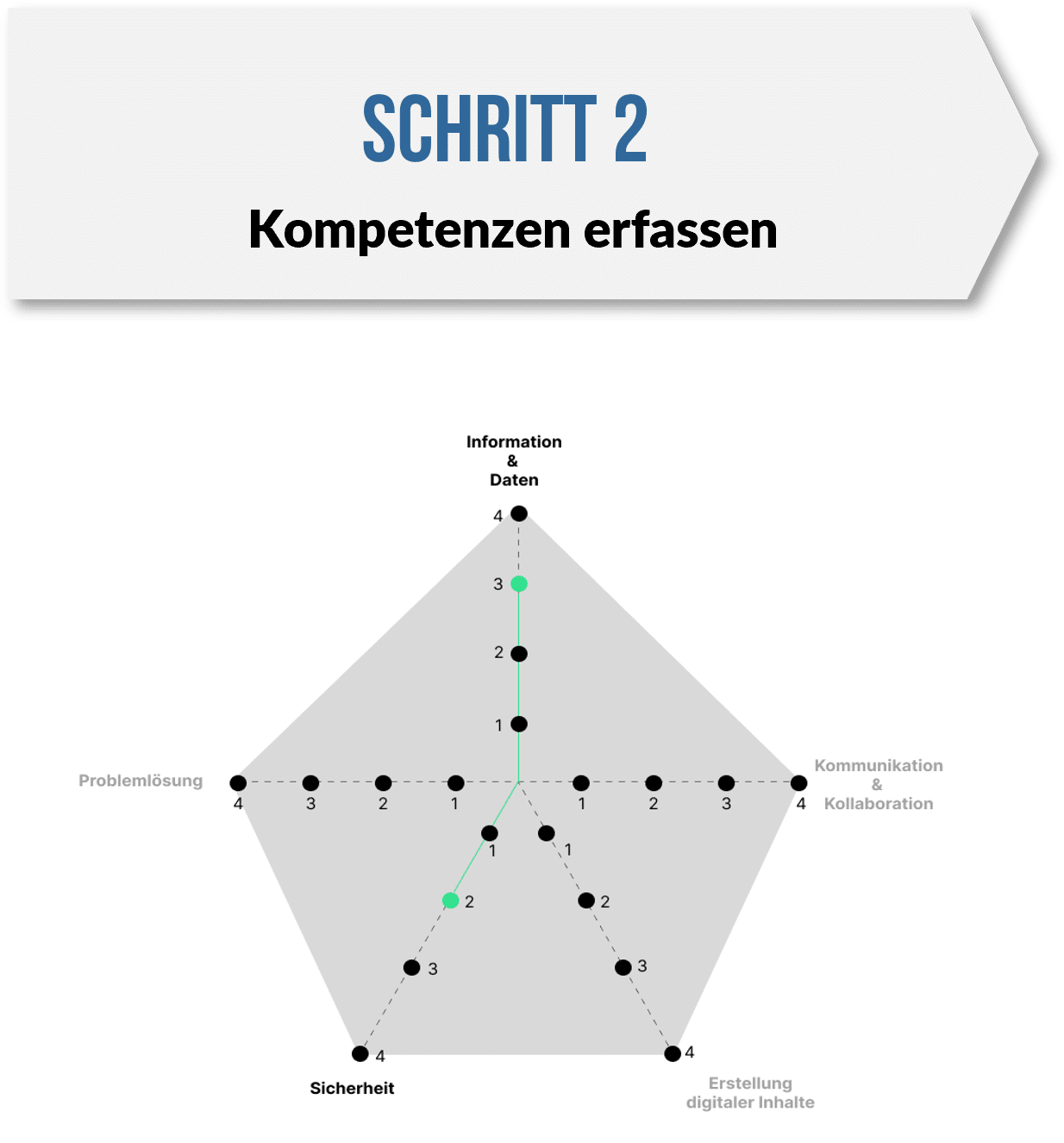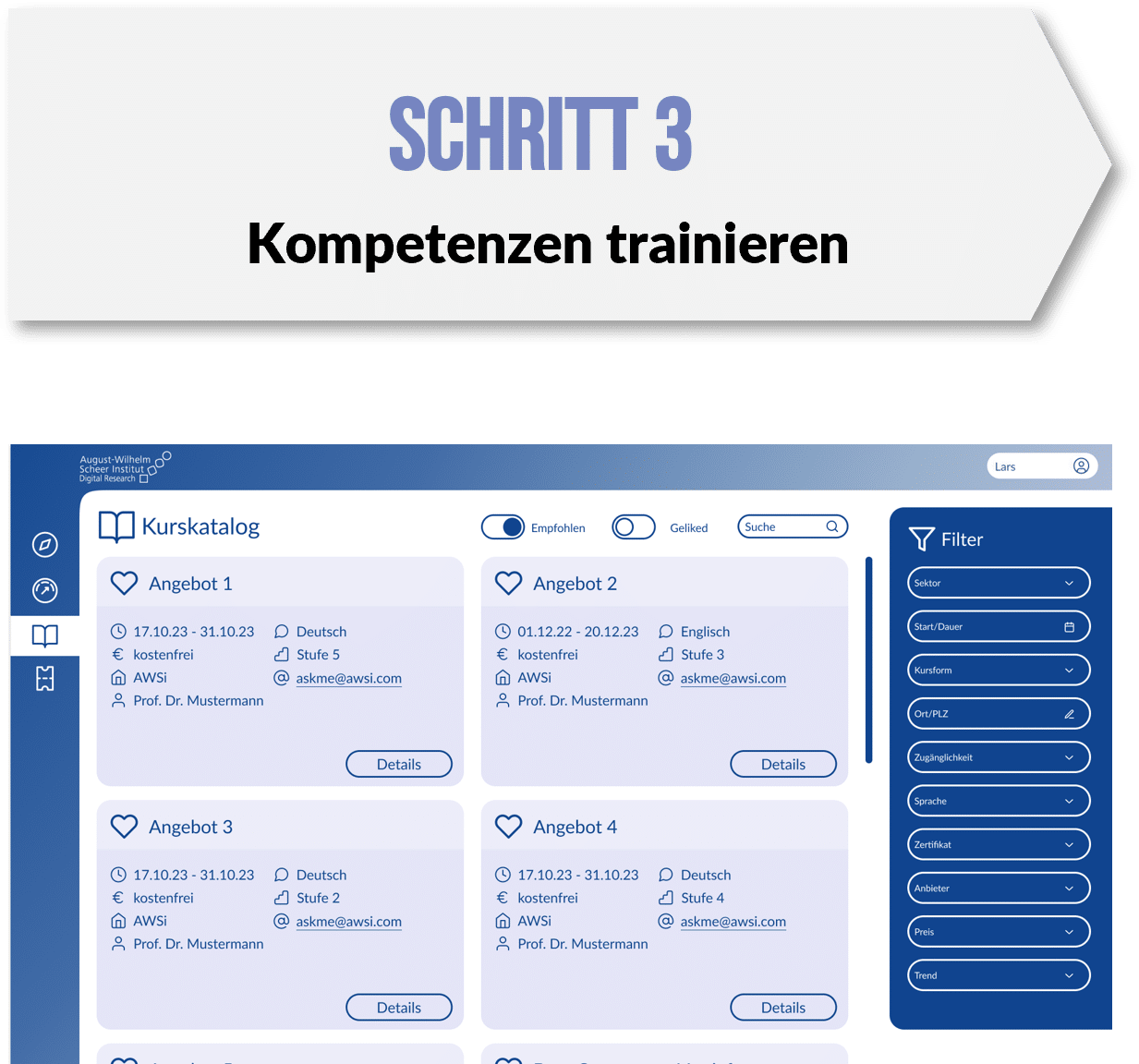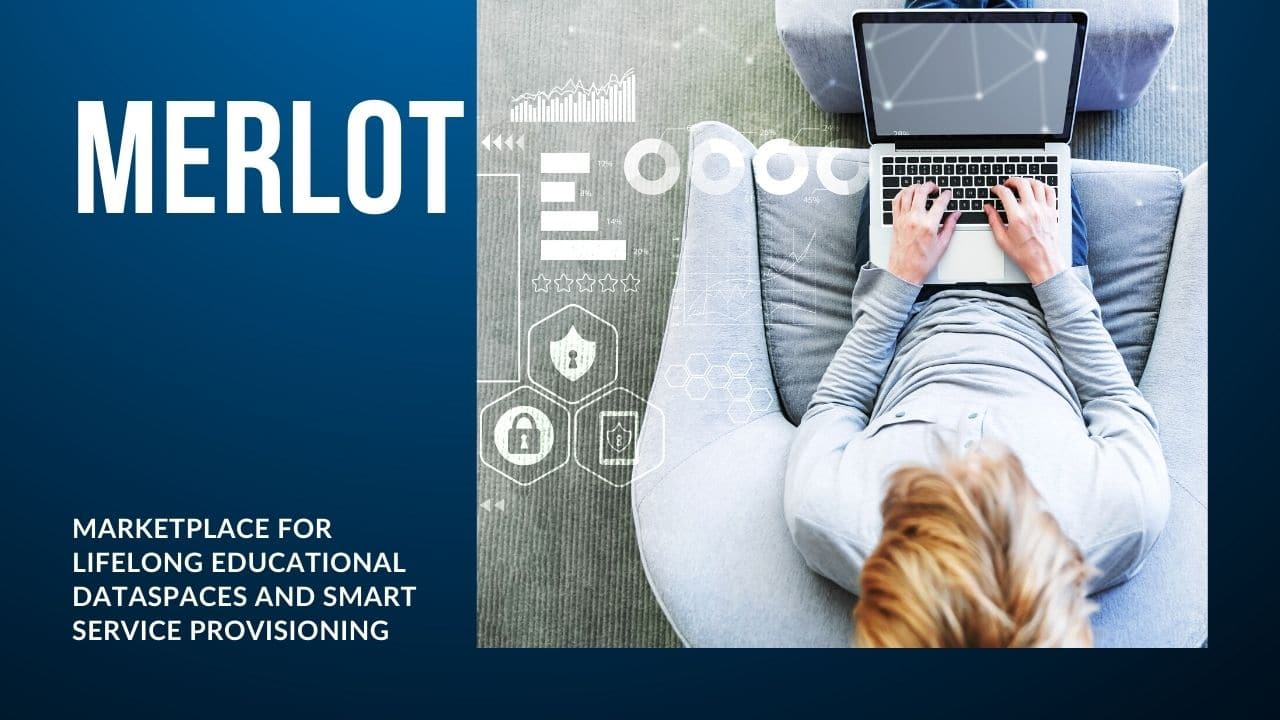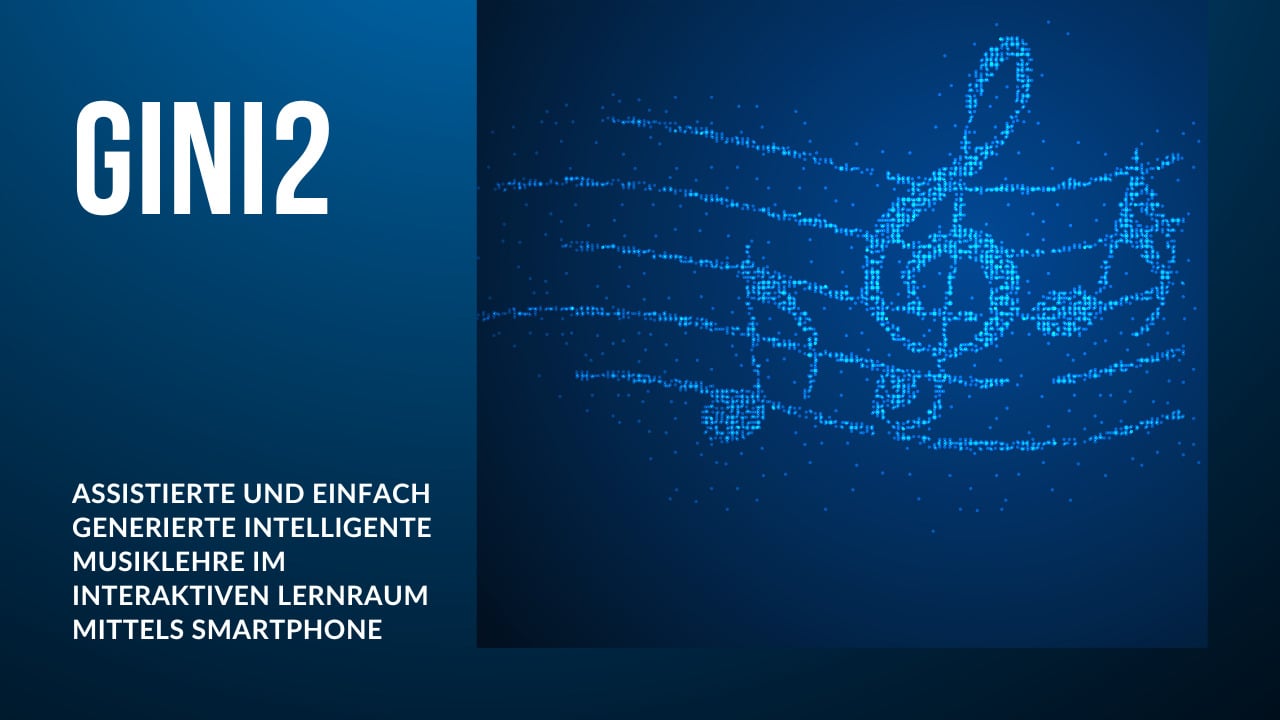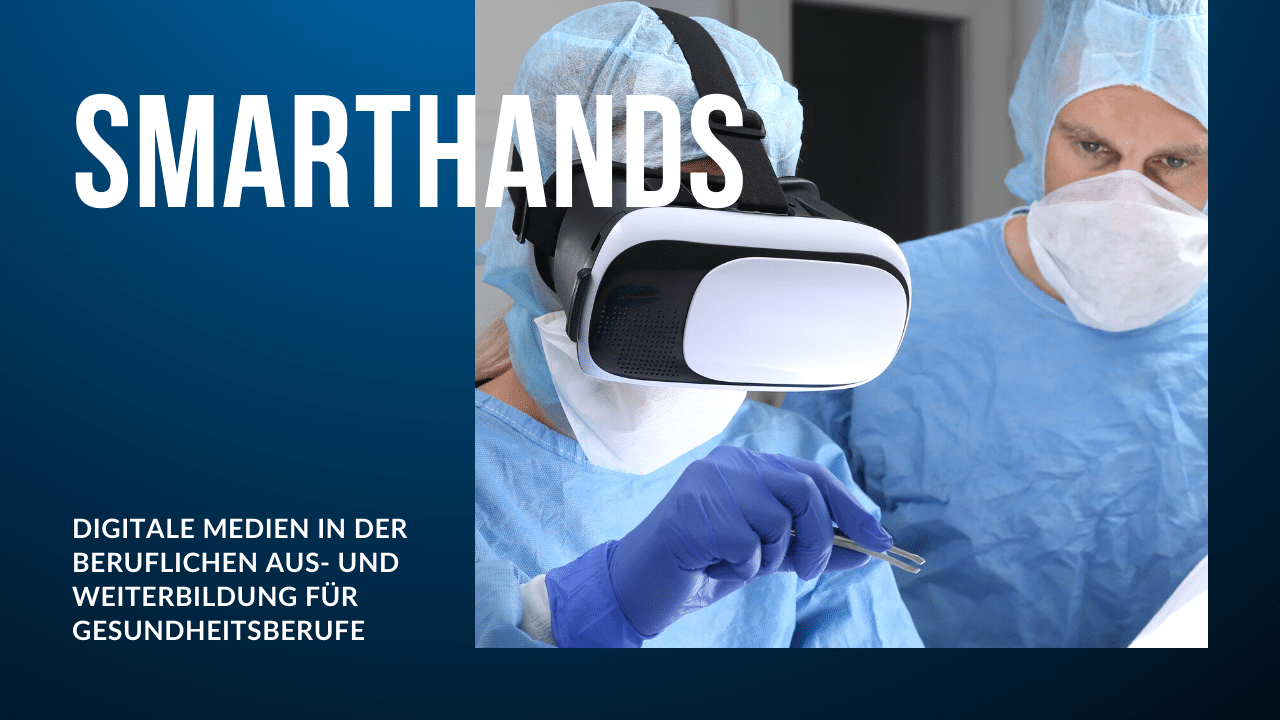Simply imparting knowledge does not lead to the acquisition of skills. In Germany, a shortage of three million skilled workers is expected by 2030. Digital skills in particular are currently and will be increasingly sought after. In order to meet the constantly changing demands of the world of work, 87 percent of companies agree that it is essential to proactively promote the skills of their employees that will be in demand in the future.
With us the digital reaches
Education the next level.
digital skills
Investment in your company's success
From knowledge-based to competence-based learning
- Analysis of the requirements of specific job positions in terms of skills, attitudes and experience
- Development of professional profiles: definition of required competences and proficiency levels
- Sound approach using scientific frameworks
- Recording of the actual situation of relevant competencies of employees
- Development of personal learning paths based on the competence profiles
- Target/actual comparison of job requirements and competency profiles to determine a job readiness level
- Matching of the course portfolio through an intelligent recommendation system
- Design learning paths and assign desired learning outcomes to each competency level
- Learning formats adapted to identified competence levels
your added value
Sustainable competence development
by adapting to individual needs
Saving of time and monetary resources
through shorter onboarding and qualification times
Differentiation in the labor market
through individual support & enabling individual competence development
Counteract the shortage of skilled workers
through reskilling and upskilling of existing staff
E-learning experience
We are researching a world in which people are the focus of digital learning. Our mission is the development and implementation of human-centric and innovative e-learning concepts so that people and companies can activate their full potential.
With our Haptic Experience concept we bring motoric experiences into the digital world!
The combination of hardware and software creates the feeling of being able to grip, move and operate virtual objects of all kinds. For a real feeling, the VR gloves used adjust the intensity of the gripping resistance and provide additional feedback through vibration. The virtual learning experience is within your grasp!
E-learning insights
#Interview

In an interview with Dr. cand. rer. medical Lysann Kasprick, expert in medical education and deputy project manager in the Smarthands research project.
#Releases
Theoretical framework for recording media competence within e-learning systems in vocational training.
This thesis deals with the conception of a theoretical framework that enables the recording of media competence in e-learning systems for the purpose of media competence teaching.
#webinars
Best Practice
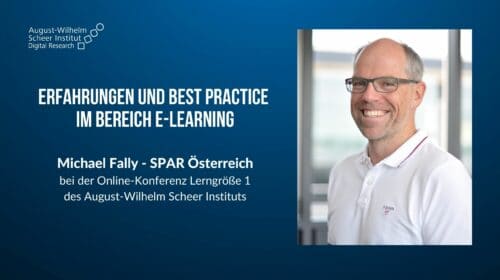
Michael Fally from SPAR Austria demonstrates how to use e-learning successfully in the corporate sector. He shared his experiences and best practice examples with us at our E-Learning Days.
